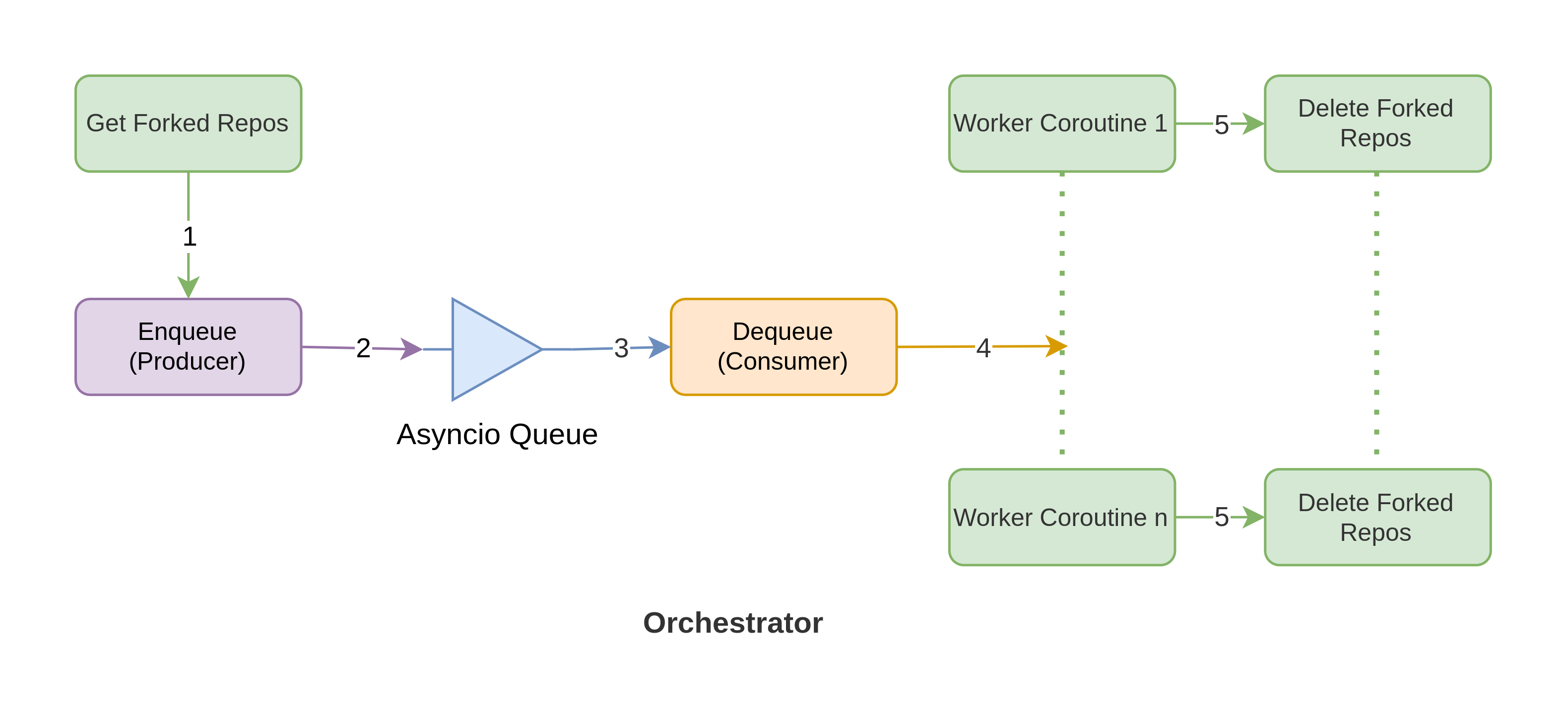>> Delete all of your forked repositories on Github <<
-
Install using pip:
pip install fork-purger
-
Create and collect your Github user access token.
-
Inspect the
--helpmenu. Run:fork-purger --helpThis will print the following:
+-+-+-+-+ +-+-+-+-+-+-+ |F|o|r|k| |P|u|r|g|e|r| +-+-+-+-+ +-+-+-+-+-+-+ Usage: fork-purger [OPTIONS] Options: --username TEXT Your Github username. [required] --token TEXT Your Github access token with delete permission. [required] --debug / --no-debug See full traceback in case of HTTP error. --delete Delete the forked repos. --help Show this message and exit. -
By default,
fork-purgerruns in dry mode and doesn't do anything other than just listing the repositories that are about to be deleted. Run:fork-purger --username <gh-username> --token <gh-access-token>You'll see the following output:
+-+-+-+-+ +-+-+-+-+-+-+ |F|o|r|k| |P|u|r|g|e|r| +-+-+-+-+ +-+-+-+-+-+-+ These forks will be deleted: ============================= https://api.github.com/repos/<gh-username>/ddosify https://api.github.com/repos/<gh-username>/delete-github-forks https://api.github.com/repos/<gh-username>/dependabot-core https://api.github.com/repos/<gh-username>/fork-purger -
To delete the listed repositories, run the CLI with the
--deleteflag:fork-purger --username <gh-username> --token <gh-access-token> --deleteThe output should look similar to this:
+-+-+-+-+ +-+-+-+-+-+-+ |F|o|r|k| |P|u|r|g|e|r| +-+-+-+-+ +-+-+-+-+-+-+ Deleting forked repos: ======================= Deleting... https://api.github.com/repos/<gh-username>/ddosify Deleting... https://api.github.com/repos/<gh-username>/delete-github-forks Deleting... https://api.github.com/repos/<gh-username>/dependabot-core Deleting... https://api.github.com/repos/<gh-username>/fork-purger -
In case of exceptions, if you need more information, you can run the CLI with the
--debugflag. This will print out the Python stack trace on the stdout.fork-purger --username <gh-username> --token <gh-access-token> --delete --debug
Internally, fork-purger leverages Python's coroutine objects to collect the URLs of the forked repositories from GitHub and delete them asynchronously. Asyncio coordinates this workflow in a producer-consumer orientation which is choreographed in the orchestrator function. The following diagram can be helpful to understand how the entire workflow operates:
Here, the square boxes are async functions and each one of them is dedicated to carrying out a single task.
In the first step, an async function calls a GitHub GET API to collect the URLs of the forked repositories. The enqueue function then aggregates those URLs and puts them in a queue. The dequeue function pops the URLs from the queue and sends them to multiple worker functions to achieve concurrency. Finally, the worker functions leverage a DELETE API to purge the forked repositories.



